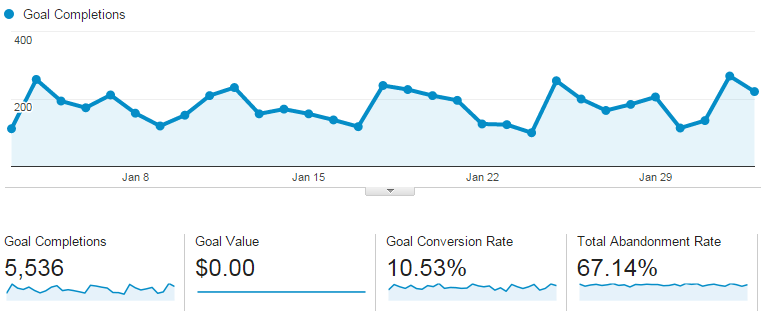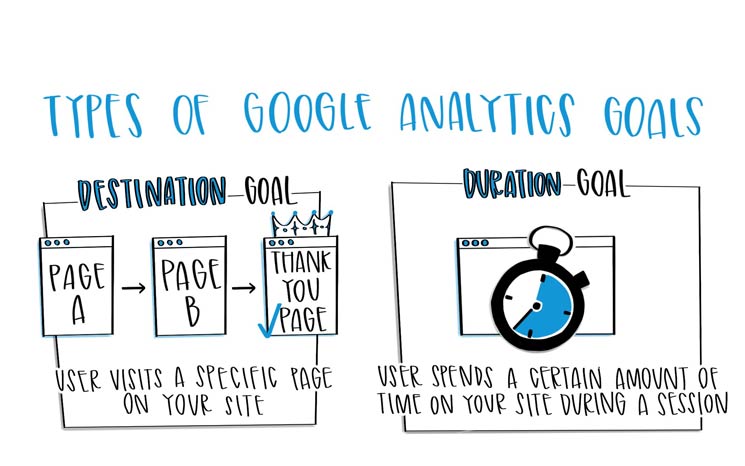Discover What Data Is Google Analytics Goals Unable to Track
Discover What Data Is Google Analytics Goals Unable to Track
Blog Article
Revealing the Blind Attractions: Recognizing What Google Analytics Goals Can not Determine
In the realm of digital analytics, Google Analytics stands as an effective device for tracking and analyzing on-line customer communications. Understanding what Google Analytics objectives can not determine is vital for gaining a comprehensive sight of individual behavior and involvement.
Individual Actions on External Platforms
Understanding how customers engage on external systems is essential for optimizing on the internet methods. External systems, such as social networks networks, referral web sites, and on-line discussion forums, play a substantial duty in driving traffic to a company's website. By evaluating individual actions on these systems, companies can obtain important understandings into the performance of their advertising efforts and the preferences of their target market.
One key element of customer behavior on external systems is the reference source. By tracking where the individuals are originating from, businesses can determine which platforms are driving the most traffic to their web site. This information can help business designate their sources much more successfully, concentrating on the platforms that yield the most effective results.

Offline Conversions and Interactions
Examining user habits on exterior systems gives valuable understandings right into online methods; nonetheless, taking into consideration offline conversions and communications is equally necessary for a comprehensive understanding of a business's total performance. Offline conversions, such as in-store acquisitions or phone queries, play a significant function in many services' success.

Acknowledgment Beyond Last Click
When delving into the world of digital advertising and marketing analytics, it ends up being vital to look past the single touchpoint of the last click for an extra extensive understanding of attribution. While Google Analytics gives useful understandings right into individual behavior, depending only on last-click acknowledgment can be limiting - what data is google analytics goals unable to track. Attribution designs that surpass the last click provide a much more nuanced sight of the client journey, thinking about all the touchpoints that bring about a conversion
Attribution beyond the last click allows marketing professionals to designate credit scores to various interactions along the conversion path, giving a clearer image of the effectiveness of various advertising and marketing networks. By discovering multi-touch attribution models such as straight, time degeneration, or position-based acknowledgment, services can better allot their advertising and marketing spending plans and maximize their methods for maximum impact.
Recognizing the impact of each touchpoint in the conversion procedure is critical for making educated decisions and maximizing ROI. By welcoming attribution past the last click, companies can gain much deeper understandings into consumer behavior and customize their advertising initiatives better.
Cross-Device and Cross-Browser Monitoring

Likewise, cross-browser monitoring complements cross-device monitoring by recording user habits as they change in between various internet browsers. Understanding exactly how users communicate with web sites on numerous browsers can help marketing professionals maximize their online experiences to guarantee consistency and performance throughout various systems.
Qualitative Information and Customer Intent
Understanding user intent through qualitative data analysis is vital for creating targeted electronic marketing methods that reverberate with the requirements and choices of the target market. Qualitative information supplies understandings into the 'why' behind individual activities, dropping light on inspirations, feelings, and choices that measurable information alone can not record. By assessing individual responses, remarks, and interactions, marketing experts can reveal useful info regarding individual intent, enabling them to tailor their messaging, content, and offerings to much better straighten with what their audience is seeking.
Qualitative information also assists in recognizing the context in which individuals engage with a website or app. This contextual understanding allows marketers to create even more pertinent and tailored experiences, inevitably driving greater involvement and conversion rates. By diving into user intent through qualitative information analysis, companies can gain a much deeper understanding of their target audience, leading to extra efficient marketing approaches that satisfy users' demands and expectations.
Verdict
Finally, Google Analytics goals have limitations in determining user habits on external platforms, offline conversions, acknowledgment beyond last click, cross-device and cross-browser tracking, and qualitative information related to customer intent. what data is google analytics goals unable to track. It is very important for organizations to be conscious of these unseen areas in order to supplement their data analysis with other tools More Bonuses and approaches to acquire an extra extensive understanding of their target market and boost their overall digital advertising and marketing techniques
By assessing user habits on these systems, businesses can acquire beneficial insights into the efficiency of their advertising and marketing efforts and the preferences of their target audience.
Examining customer behavior on outside platforms offers useful understandings into online techniques; nevertheless, considering offline conversions and interactions is equally vital for a comprehensive understanding of a business's total performance.In electronic marketing analytics, moving beyond last-click acknowledgment to discover cross-device and cross-browser tracking is vital for acquiring a holistic understanding of user interactions across numerous systems and devices. By analyzing user responses, remarks, and communications, online marketers can reveal valuable details concerning customer intent, enabling them to customize their messaging, web content, and offerings to much better straighten with what their target market is looking for.
By diving right into individual intent with qualitative data analysis, organizations can obtain a much deeper understanding of their target audience, leading to a lot more efficient advertising methods that satisfy users' needs and assumptions.
Report this page